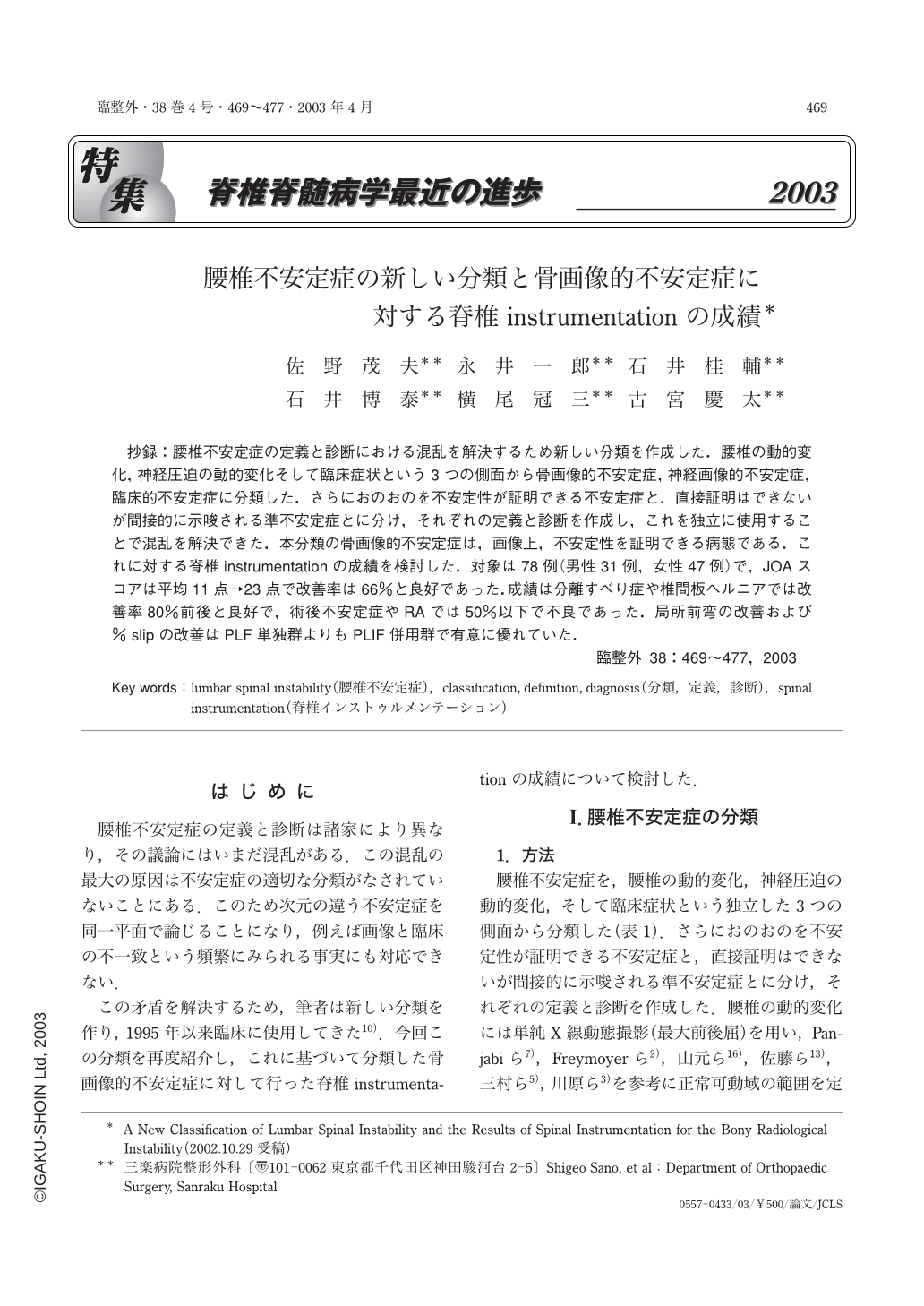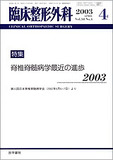Japanese
English
- 有料閲覧
- Abstract 文献概要
- 1ページ目 Look Inside
抄録:腰椎不安定症の定義と診断における混乱を解決するため新しい分類を作成した.腰椎の動的変化,神経圧迫の動的変化そして臨床症状という3つの側面から骨画像的不安定症,神経画像的不安定症,臨床的不安定症に分類した.さらにおのおのを不安定性が証明できる不安定症と,直接証明はできないが間接的に示唆される準不安定症とに分け,それぞれの定義と診断を作成し,これを独立に使用することで混乱を解決できた.本分類の骨画像的不安定症は,画像上,不安定性を証明できる病態である.これに対する脊椎instrumentationの成績を検討した.対象は78例(男性31例,女性47例)で,JOAスコアは平均11点→23点で改善率は66%と良好であった.成績は分離すべり症や椎間板ヘルニアでは改善率80%前後と良好で,術後不安定症やRAでは50%以下で不良であった.局所前弯の改善および%slipの改善はPLF単独群よりもPLIF併用群で有意に優れていた.
We classified the instability lumbar spine into bony radiological instability and sub-instability based on the dynamic plain X-ray findings,neuroradiological instability and sub-instability based on the dynamic myelography findings, and clinical instability and sub-instability based on the clinical manifestations. The definition and diagnosis of instability was made in this classification. The conceptual confusion existed in instability was resolved with this new classification, by using each instability independently.
The results of instrumentation surgery in 78 cases of bony radiological instability were assessed. The JOA score improved from 11 points preoperatively to 23 points postoperatively, and the improvement rate was 66%. The improvement in lumbar lordosis and percent slip was statistically better in the group treated by PLIF and PLF than in the group treated by PLF alone.

Copyright © 2003, Igaku-Shoin Ltd. All rights reserved.


